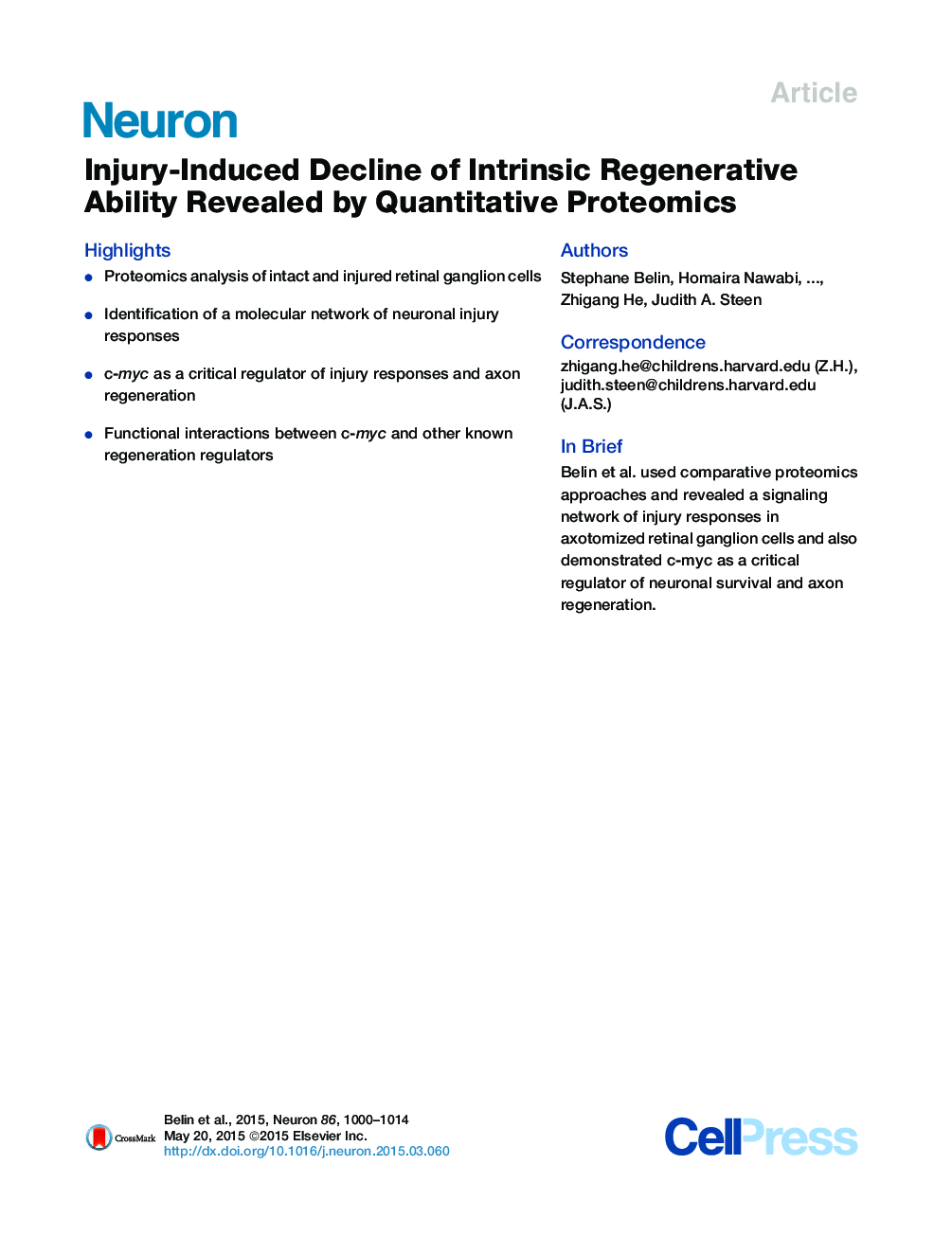| Article ID | Journal | Published Year | Pages | File Type |
|---|---|---|---|---|
| 4320847 | Neuron | 2015 | 15 Pages |
•Proteomics analysis of intact and injured retinal ganglion cells•Identification of a molecular network of neuronal injury responses•c-myc as a critical regulator of injury responses and axon regeneration•Functional interactions between c-myc and other known regeneration regulators
SummaryNeurons differ in their responses to injury, but the underlying mechanisms remain poorly understood. Using quantitative proteomics, we characterized the injury-triggered response from purified intact and axotomized retinal ganglion cells (RGCs). Subsequent informatics analyses revealed a network of injury-response signaling hubs. In addition to confirming known players, such as mTOR, this also identified new candidates, such as c-myc, NFκB, and Huntingtin. Similar to mTOR, c-myc has been implicated as a key regulator of anabolic metabolism and is downregulated by axotomy. Forced expression of c-myc in RGCs, either before or after injury, promotes dramatic RGC survival and axon regeneration after optic nerve injury. Finally, in contrast to RGCs, neither c-myc nor mTOR was downregulated in injured peripheral sensory neurons. Our studies suggest that c-myc and other injury-responsive pathways are critical to the intrinsic regenerative mechanisms and might represent a novel target for developing neural repair strategies in adults.
